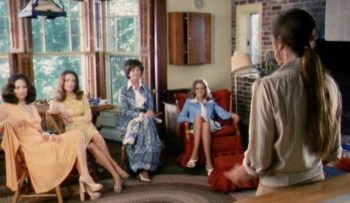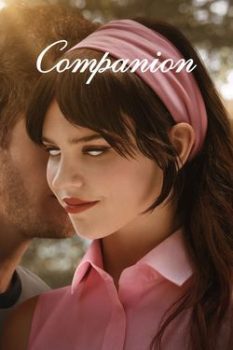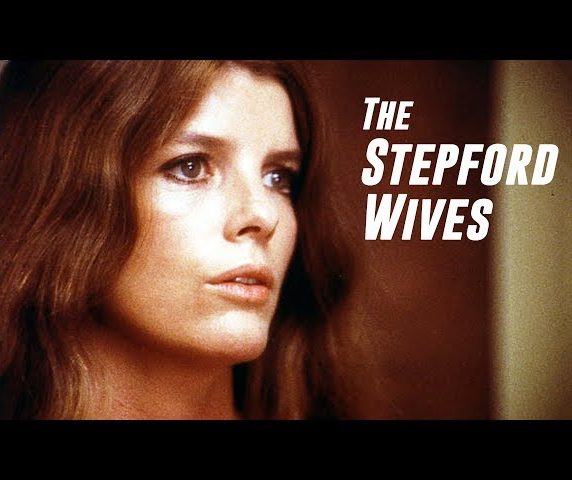The 50th Anniversary of THE STEPFORD WIVES
(and the five-month anniversary of COMPANION):
“Elevated Horror” Across Half A Century
By
Tom Lavagnino –
What’s your definition of “elevated horror”?
Technically speaking, the term didn’t exist before 2014 -– the year of THE BABADOOK, DON’T BLINK, and IT FOLLOWS.
Quality storytelling, psychologically-rich characterizations, and a side-stepping of gore (well, except for that head getting lopped off in the back seat of HEREDITARY) are its hallmarks; it’s a sub-genre that (however you choose to define it) has become the “go to” cinematic mindset for pretty much every intelligent film-maker A24-ing their way into the contemporary horror field.
But hasn’t “elevated horror” been around since the dawn of cinema?
THE CABINET OF DR. CALIGARI, Lon Chaney’s THE PHANTOM OF THE OPERA, and the original NOSFERATU would all appear to qualify, PSYCHO, INVASION OF THE BODY SNATCHERS, and Polanski’s REPULSION, too.
And this year marks the fiftieth anniversary of the release of THE STEPFORD WIVES –- a movie that’s nothing if not a working definition of the term. The film’s psychologically-savvy examination of the mental make-up of its era (the mid-1970’s, and the volatile rise of feminism), coupled with its artistic desire to “elevate” a sense of incipient dread (without the showcasing of overt bloodletting) mark it as one of the most influential “serious” horror movies of the 1970’s.

Indeed, the narrative of THE STEPFORD WIVES, originally written as a novel by Ira Levin (and adapted for cinema by William Goldman), is as classic as they come. In the wake of the women’s movement and its accompanying cultural traction-and-tension, all the husbands of the Connecticut hamlet of Stepford gradually-and-then-suddenly conspire to murder-and-re-create their wives as more compliant (and vastly sexier) mechanical simulacrums –- a collective decision that leaves we, the viewer, gobsmacked and horrified; at fade-out, all the newly-roboticized wives are seen rolling their shopping carts around the town grocery store, greeting each other with the blandest of programmed platitudes.
Exactly fifty years later, the opening scene of this year’s COMPANION sees Iris, a robotic female (portrayed by the brilliant Sophie Thatcher), trolling those very same aisles with an identical grocery cart. But technology has improved by leaps and bounds over the course of the past half-century; it’s impossible to immediately identify Iris as a mechanical creation –- especially since she “never says no” to her boyfriend Josh (cannily played by Jack Quaid).

Iris’ “you’re always right” behavior toward Josh is chronicled with striking subtlety; we, as an audience, aren’t even aware of the submissiveness until the robotic reveal. (Perhaps the most damning aspect of today’s still-arguably-sexist societal construct is the complicit nature of our attitude toward this mindset. We can’t help but be whip-sawed by the revelation that Iris is a robot — because she acts “just like any young girl” trying desperately to “please her guy.”)
The take-away?
Thematically: Things have progressed a bit since those halcyon days in Stepford, but perhaps further steps need be taken.
Definitionally: “Elevated horror” has been around for well-nigh a century, whether anybody wants to recognize it or not (and it ain’t going away anytime soon).
Tom Lavagnino is a playwright, television producer and golfer (18 handicap) living in Southern California. www.tomlavagnino.com







